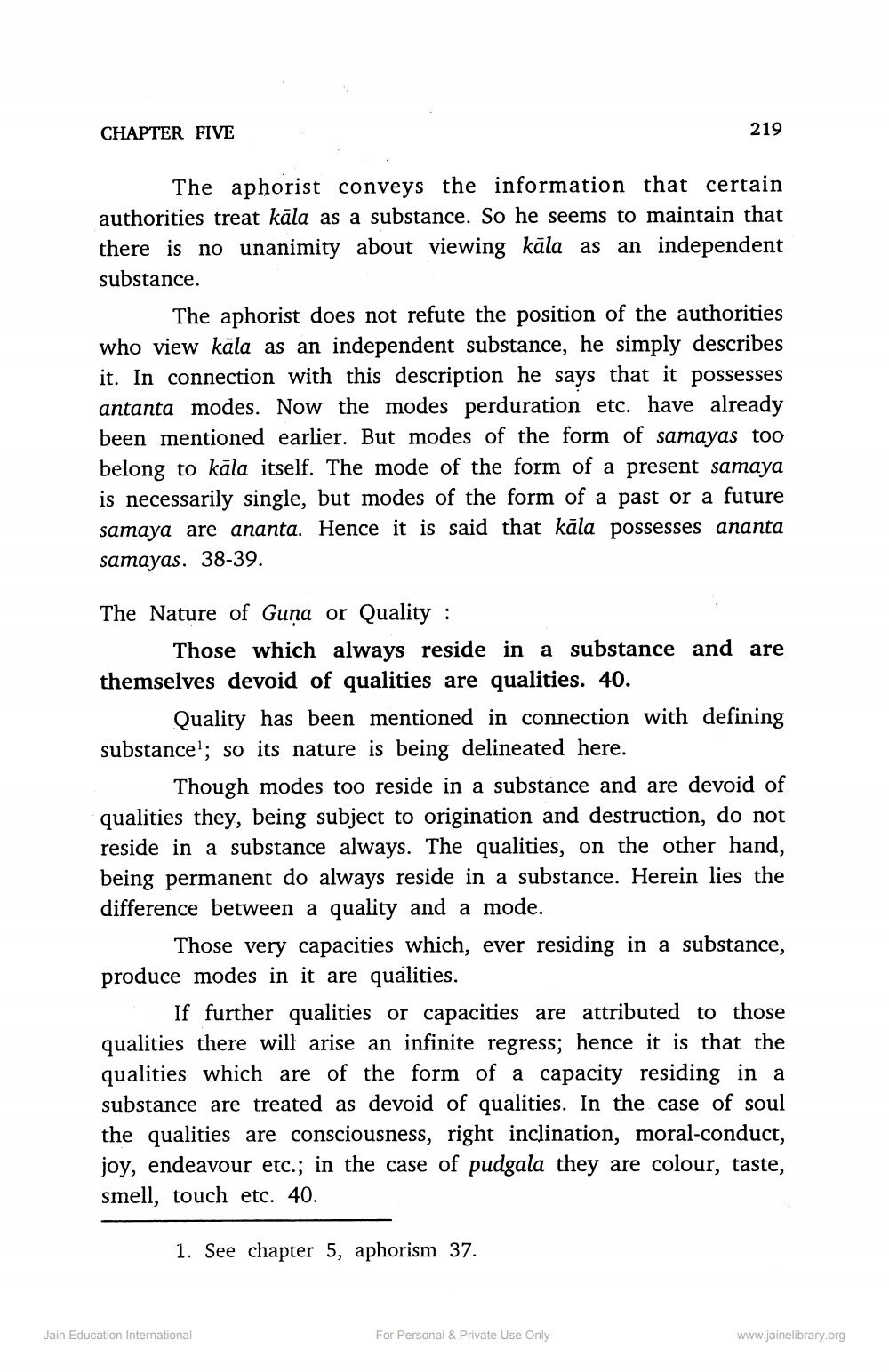________________
CHAPTER FIVE
219
The aphorist conveys the information that certain authorities treat kāla as a substance. So he seems to maintain that there is no unanimity about viewing kāla as an independent substance.
The aphorist does not refute the position of the authorities who view kāla as an independent substance, he simply describes it. In connection with this description he says that it possesses antanta modes. Now the modes perduration etc. have already been mentioned earlier. But modes of the form of samayas too belong to kāla itself. The mode of the form of a present samaya is necessarily single, but modes of the form of a past or a future samaya are ananta. Hence it is said that kāla possesses ananta samayas. 38-39.
The Nature of Guna or Quality :
Those which always reside in a substance and are themselves devoid of qualities are qualities. 40.
Quality has been mentioned in connection with defining substancet; so its nature is being delineated here.
Though modes too reside in a substance and are devoid of qualities they, being subject to origination and destruction, do not reside in a substance always. The qualities, on the other hand, being permanent do always reside in a substance. Herein lies the difference between a quality and a mode.
Those very capacities which, ever residing in a substance, produce modes in it are qualities.
If further qualities or capacities are attributed to those qualities there will arise an infinite regress; hence it is that the qualities which are of the form of a capacity residing in a substance are treated as devoid of qualities. In the case of soul the qualities are consciousness, right inclination, moral-conduct, joy, endeavour etc.; in the case of pudgala they are colour, taste, smell, touch etc. 40.
1. See chapter 5, aphorism
37.
Jain Education International
For Personal & Private Use Only
www.jainelibrary.org




